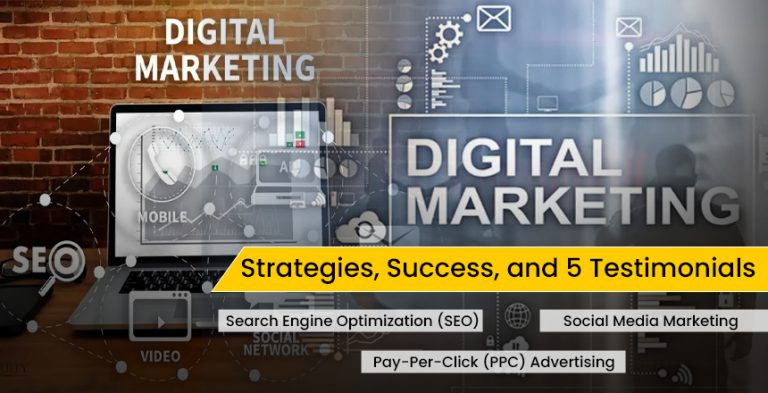Content marketing is among the most effective types of digital marketing used nowadays. With consumers probably consuming more and more content online, brands require a powerful content strategy to conquer clients. But the question that arises here is: What is content marketing? Here’s an in-depth look. Understanding: Content marketing can be defined as a type of marketing that involves the creation and sharing of valuable, relevant, and educational content to attract and retain a clearly defined audience with the aim of driving profitable customer action.
One of the best and most powerful marketing strategies is content marketing, which is all about
providing valuable, relevant, and regular content to a particular audience. Its purpose is to help
customers take a profitable action by making them interested in your brand.
In contrast to conventional promotional approaches that involve a sales-oriented message for a
specific product, content marketing is all about passing useful information to customers. Thus,
brands create content that is informative at most and use their product promotion in between,
rather than making promotions continuous. It assists in converting prospects and customers into
clients and the customer into a brand ambassador.
Some examples of the content marketing assets include the following:.
There are many types of content assets used in content marketing, including:
- Blog posts—these are the building blocks of most content marketing plans. Blogs permit the constant but scheduled publication of focused content in the form of list posts, articles, and personal point of view articles.
- Infographics: all types of visual content such as charts, graphics, and illustrations that are filled with statistics and other appealing features are interesting and shareable.
- Videos—short and long, instructional and documentary—fascinating videos can be a great source of information.
- Podcasts: Podcasts are basically series of audio works that can also be easily consumed while on the go. Podcasts too can be created and distributed in the same way messages can be created and distributed.
- WHITE PAPERS AND E-BOOKS: In-depth information is shared in writing, and it aids extensive focus on a given theme in its digital downloadable format. All forms of the social channel, like Facebook and Twitter, provide the content disseminating chance in this social media post.
These are just some examples. Blog posts, ebooks, webinars, slide decks, checklists, and
virtually any content type marketers create can be considered content marketing assets. It is not
about creating general and often times gimmicky folders or information folders to circulate in the
organization.
Goals of Content Marketing
The core objectives of content marketing include:
- The process involves the creation of an information flow that raises awareness and forms a market identity for a brand by publishing branded information.
- Create awareness among the target group and make your company a go-to source in that industry. It has been quantitatively postulated that the solidity of useful fact-filled content evidences the possession of knowledge and experience.
- The majority of Internet users are eager to find useful information through Web sites and do not welcome constant attempts of the site to sell something to them.
- Keep your customers informed and continue to give them materials about your products or services. Therefore, content helps to constantly remind clients about your brand.
- Social offers and shares via unique and creative content best suited for the social media domain. This expands reach.
- In this way, instead of trying to make a direct sale, content marketers nurture prospects and increase conversion with time.
Building a Framework for Content Marketing
It cannot be ‘ad hoc’; it needs to be a strategic and fully thought out marketing plan of ideas and
actions. Key elements include:
- Define buyer personas—audiences. Now focus on presenting content they’ll find interesting and might find interesting about their difficulties and topics they might be very passionate about.
- Topics>Develop plans to include content based on the stages of the consumer’s journey from
initial awareness through engagement to loyalty. Identification of further detailed topics of
concern to be covered to fill the gaps found between intended and actual meanings. - Analyze formats: Which content format and delivery channels can be used for each target group? Align formats to topics.
- Content buckets: Sort content into buckets such as educate, entertain, inspire, and the like. To say which bucket is optimal for which goal suction to the goals of the target audience.
- Post frequency schedule: when to post without littering information over too much of it. Make sure you always have new content as well as evergreen content that’s old.
- Promotion: Create the distribution and promotion strategy to involve email, social media, SEO, etc. Marketing must be shareable.
- Metrics: Find out which KPIs have to be used, like clicks, conversions, shares, etc. How to
determine the success of the content. - By doing research, brands can create an improved content calendar that can fit a brand’s digital marketing goals and objectives.
Benefits of Content Marketing
There are many key benefits to a content marketing strategy:
- Web traffic is organically driven by growth in visits from shares of search engines. Increased ‘branding’ and ‘voice’ of the business.
- Consistent interaction and value-added relationships
- Cost Effectiveness vs. CONAD
- Better generation of more leads and increased sales conversion.
When marketers ensure that the right content is given to the appropriate customer on the right
stage, brands are rewarded with higher website visits, better conversion rates, better sales, and
better financial returns on content investment.
Today’s successful marketing strategies require content marketing because of the increase in
media usage. Sharing valuable, motivating, enjoyable, and helpful content resources can enable
brands to acquire customers and then engage with these customers and touch their lives in
positive ways. In the future years, thus, it will remain a major strategy to implement consistently
with the strategic goals and objectives of a business.








